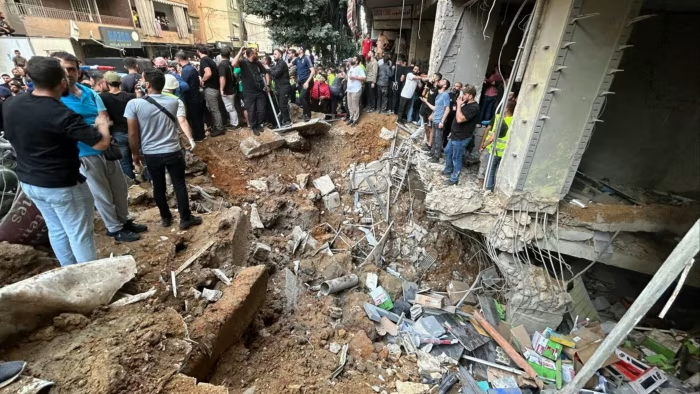Life wasn’t easy already for folks in northeast Syria, but now they’re facing a crisis that’s bringing them to their knees. Picture this: You turn on your tap, and nothing comes out. Not a drop: such is the grim reality for over a million people, between Turkish air raids and an unforgiving drought.
“Water is more precious than gold here,” Ahmad al-Ahmed says, his hands clasping the wheel of his water tanker. He’s witnessed despair in the faces of the people chasing his truck and begging for water. Some even threaten him. “If he doesn’t give me water, I’ll puncture his tires,” one woman said, shaking in frustration.
Numbers are proof enough: since October 2019, more than 100 strikes have been launched by Turkey against everything from oil fields to power stations in the Kurdish-held territory.But it’s the attack on electricity infrastructure last October that dealt the killer blow, shutting down the Alouk water station – the region’s lifeline.
Now, in Hassakeh city, life revolves around water deliveries. Every day, hundreds of tankers make the grueling 12-mile journey to bring water from distant sources. Schools, orphanages, and hospitals get priority, but there’s never enough to go around.
“Let me tell you frankly,” says Yayha Ahmed, who co-directs the city water board, his voice heavy with concern, “north-east Syria is facing a humanitarian catastrophe.”
The timing couldn’t be worse. The region’s been battling four years of extreme drought, made worse by climate change. When our team visited Alouk, we saw firsthand how people struggled just to get basic water needs met.
Turkey defends its actions, saying they’re targeting “sources of income and capabilities” of Kurdish groups they consider terrorists. They accept the drought, but making excuses for it and blaming bad water governance and neglected construction is what they are claiming.
All of it is the result of a convoluted conflict. And there is Syria’s never-ending civil war, followed by Turkey’s clash with the Kurdish fighters – who, with US support, drove ISIS out of the area in 2018.They set up their own administration (AANES), but Turkey’s President Erdogan isn’t having it, calling it a “terror state” on his doorstep.
Between October 2023 and January 2024, the strikes intensified. Power stations in Amouda, Qamishli, and Darbasiyah got hit, along with the main Swadiyah power plant. The damage was so bad, NASA’s satellites picked it up. “On January 18th… a significant power outage is evident in the region,” confirmed NASA scientist Ranjay Shrestha, studying the night-time imagery.
Meanwhile, the AANES claims Turkey’s trying to “destroy our people’s existence.” It’s hard to argue when you see the impact. The region that once proudly supplied water to a million people in Hassakeh province now depends on emergency deliveries.
As engineers and tanker drivers work around the clock to get water to those who need it most, one thing’s crystal clear – when war meets climate change, ordinary folks pay the price. And right now, they’re paying in every drop of water they can’t access.








